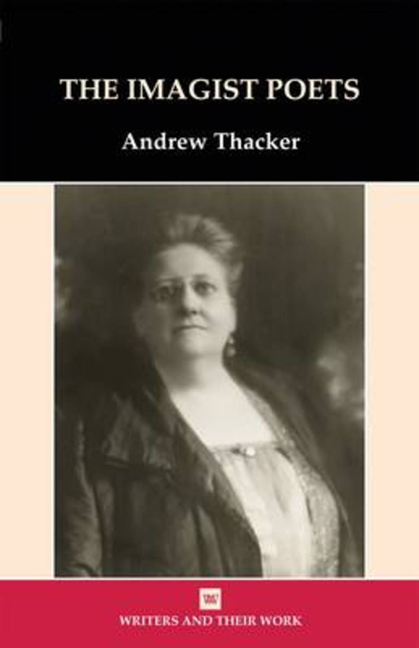Book contents
- Frontmatter
- Dedication
- Contents
- Acknowledgements
- Biographical Outlines
- Abbreviations
- Introduction: The Formation of Imagism
- 1 Movements and Modernism
- 2 Publishing, Publicity, and Magazines
- 3 Prefaces and Manifestos
- 4 Modern Themes
- 5 Urban Images
- 6 Gender and Sexuality: ‘Amygism’ and ‘H.D. Imagiste’
- Afterword
- Notes
- Select Bibliography
- Index
6 - Gender and Sexuality: ‘Amygism’ and ‘H.D. Imagiste’
- Frontmatter
- Dedication
- Contents
- Acknowledgements
- Biographical Outlines
- Abbreviations
- Introduction: The Formation of Imagism
- 1 Movements and Modernism
- 2 Publishing, Publicity, and Magazines
- 3 Prefaces and Manifestos
- 4 Modern Themes
- 5 Urban Images
- 6 Gender and Sexuality: ‘Amygism’ and ‘H.D. Imagiste’
- Afterword
- Notes
- Select Bibliography
- Index
Summary
A fuller understanding of Imagism as a cultural formation requires attention to how the individual identities of the poets were formed and altered in the group identity of ‘Imagism’. The two female Imagists, Amy Lowell and H.D., were distinct from the other poets, in terms not only of their gender, but also that of their sexuality. Though H.D. married Aldington in 1913, she had already experienced an intense attachment to a female teacher, Frances Gregg, while still living in America. In 1918 H.D. met Bryher (Annie Winifred Ellerman), who was to become her lifelong companion, although H.D. also had later relation- ships with men. Amy Lowell first met the actress Ada Russell in 1912 and in 1914 Russell moved into Lowell's home at Sevenels, near Boston, remaining with her until Lowell's early death in 1925. The work of both women is marked by these various attachments and sexualities, with H.D.'s poems often exploring boundaries and borders, and much of Lowell's poetry exhibiting coded, and not so coded, forms of lesbian desire.
It is only relatively recently that these issues of gender and sexuality have been seen to significantly alter our understanding of Imagism as a movement. Reading gender and sexuality into the Imagist formation also sheds new light on the internal dispute between Pound and Lowell. Pound's dislike of Lowell's version of Imagism (what he termed ‘Amygism’) cannot there- fore be merely viewed as an aesthetic disagreement. For example, Pound's criticism of Lowell, is deeply gendered in its terminology: ‘Amygism’, Pound wrote, displayed ‘sloppiness, lack of cohesion, lack of organic centre in individual poems, rhetoric’; H.D.'s verse, he suggested in 1917, also suffered from a lack of solidity due to the ‘flow-contamination of Amy and Fletcher’. Many aspects of Imagist theory, with its vocabulary of ‘concrète things’, ‘objectivité and ‘precision’, is thus implicitly gendered, associating poetry with a masculine perception of the craft of verse. However, if Pound viewed Lowell's version of Imagism as lacking these qualities, it cannot simply be attributed to his misogyny or homophobia, evident as these are in many places in his work. For one must remember that the ‘hard light, clear edges’ of Imagism was first used by Pound to describe the work of H.D. As Cyrena Pondrom has argued, the early poems of H.D. were the ‘models’ which ‘enabled the precepts of imagism to be defined’.
- Type
- Chapter
- Information
- The Imagist Poets , pp. 89 - 101Publisher: Liverpool University PressPrint publication year: 2011



